Traveling around the Galápagos Islands is a straight-forward affair: All you have to do is show up with the right gear, and the islands (and their precious animal inhabitants) will put on the best show you’ve ever seen. This should be simple. Surely, if the 100-year-old giant tortoises can stay calm and strike a pose while a dozen teary-eyed tourists gawk at them from six feet away, you can pack the right kind of socks.


What I Packed for a Magical Week of Sea, Sun, and Wildlife-Watching in the Galápagos Islands
While packing for the Galápagos seems easy, there’s one thing you need to always account for: The sun will be brutal. The temperatures might not be high and it might even rain, but the sun will be relentless, no matter the season. In many ways, that makes packing very easy because, whether you decide to visit during the warm and wet season between late December and May, or the cold and dry season of May until late November, you’ll need to have mostly the same priority in mind: items with some kind of high SPF or UPF rating, assuming you don’t want to burn to a crisp.
Another essential piece of advice to remember while packing for a trip to the Galápagos archipelago is that you’ll spend as much time on land as you will on the water. Quick-dry clothing (no denim), multiple bathing suits, and waterproof shoes are indispensable if you don’t want to struggle with belongings soaked in sea water.
Here’s what I packed for a week in in the Galápagos Islands with expedition cruise line Ecoventura, as well as some of the items I wish I had taken with me.

Photo: Ecoventura
We hope you love the products we recommend! Just so you know, Matador may collect a small commission from the links on this page if you decide to make a purchase.
Shoes
If you’re traveling to the Galápagos Islands, it’s probably to spend time in nature, probably wildlife-watching. So you can eschew the elegant shoes you’d wear at a nice restaurant, and bring practical and comfortable footwear instead. For a casual, adventure-focused trip, you only need two pairs of shoes: one for dry and one for wet activities.
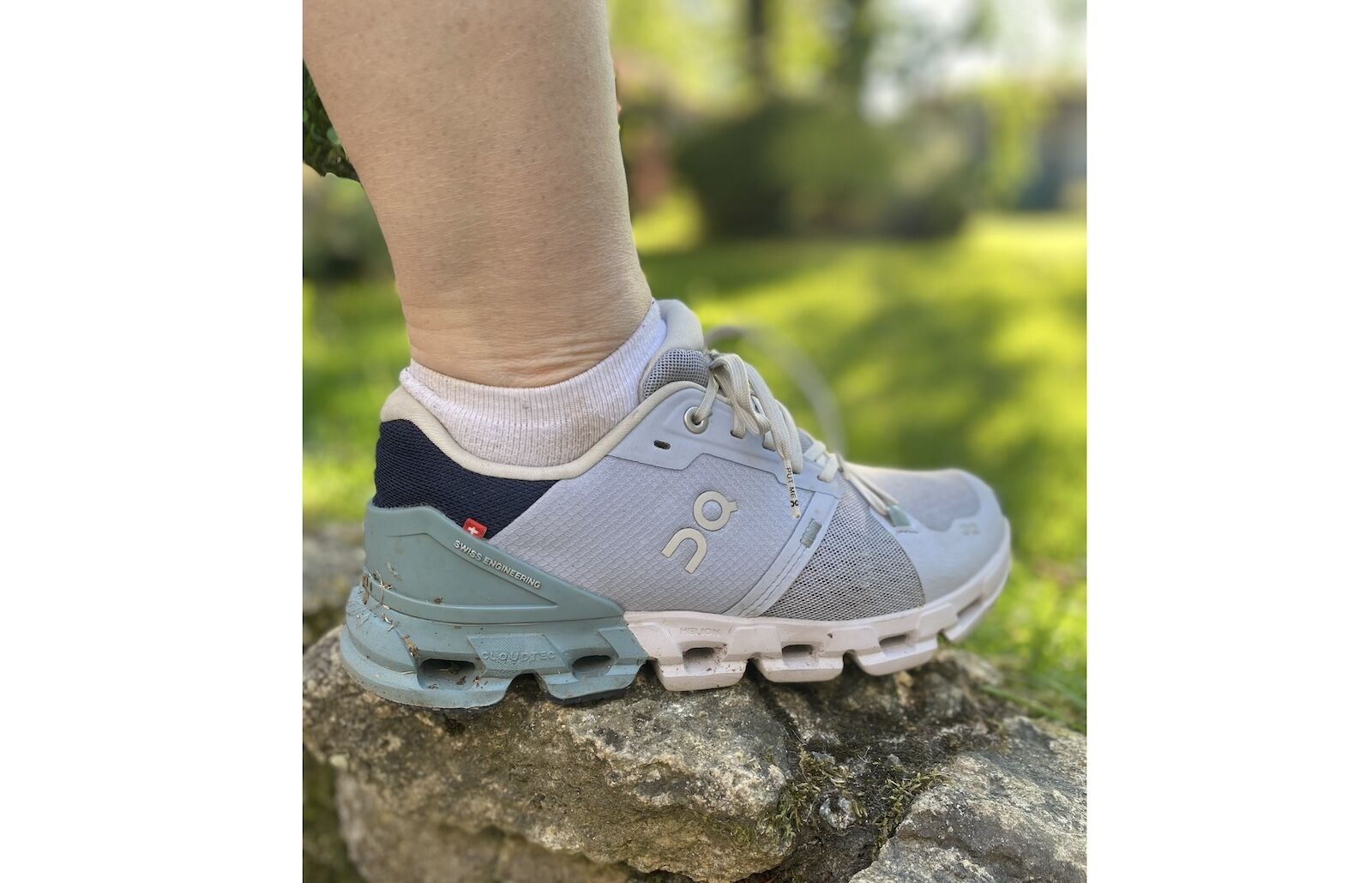
Photo: Morgane Croissant
While light hiking boots like On’s Cloudtrax are a good option for land-based exploration, a comfortable pair of sneakers will do the job just as well. I chose to travel with my trusty and well-worn pair of On CloudFlyer 4 runners, which I take just about everywhere. They’re padded for comfort and protection, very stable no matter the terrain, and super light so they never feel like an impediment, even on tough hikes. If I were visiting in the wet season, however, I’d go for a pair of waterproof sneakers to make sure my feet stay dry at all times — I like to be prepared for all eventualities.

Photo: Jesse Adams
On your tour of the islands, you’ll spend a lot of time in and out of Zodiacs and kayaks, so water sandals are a must. While some might prefer a simple pair of rubber sandals like the ones Crocs and Birkenstocks make, I advise opting for something with Velcro straps to keep your feet more secure on walks or hikes. Teva and Chacos are the most well-known brands for water sandals, but many outdoor labels make very similar products. I opted for Camper’s colorful Match Sandals, and they not only did the job adequately, but also dried quickly after being submerged. Also, the straps are made with 100 percent recycled polyester — an appealing feature, in my book.)
Sun protection
The sun rays are strongest at the Equator, so while you’re out and about watching sea lions on the beach or swimming with sea turtles, every little bit of skin that’s not appropriately protected or covered will burn. Take it from a fair-skinned, red-haired, freckled traveler who thought she had it all figured out (but didn’t).
Sunscreen
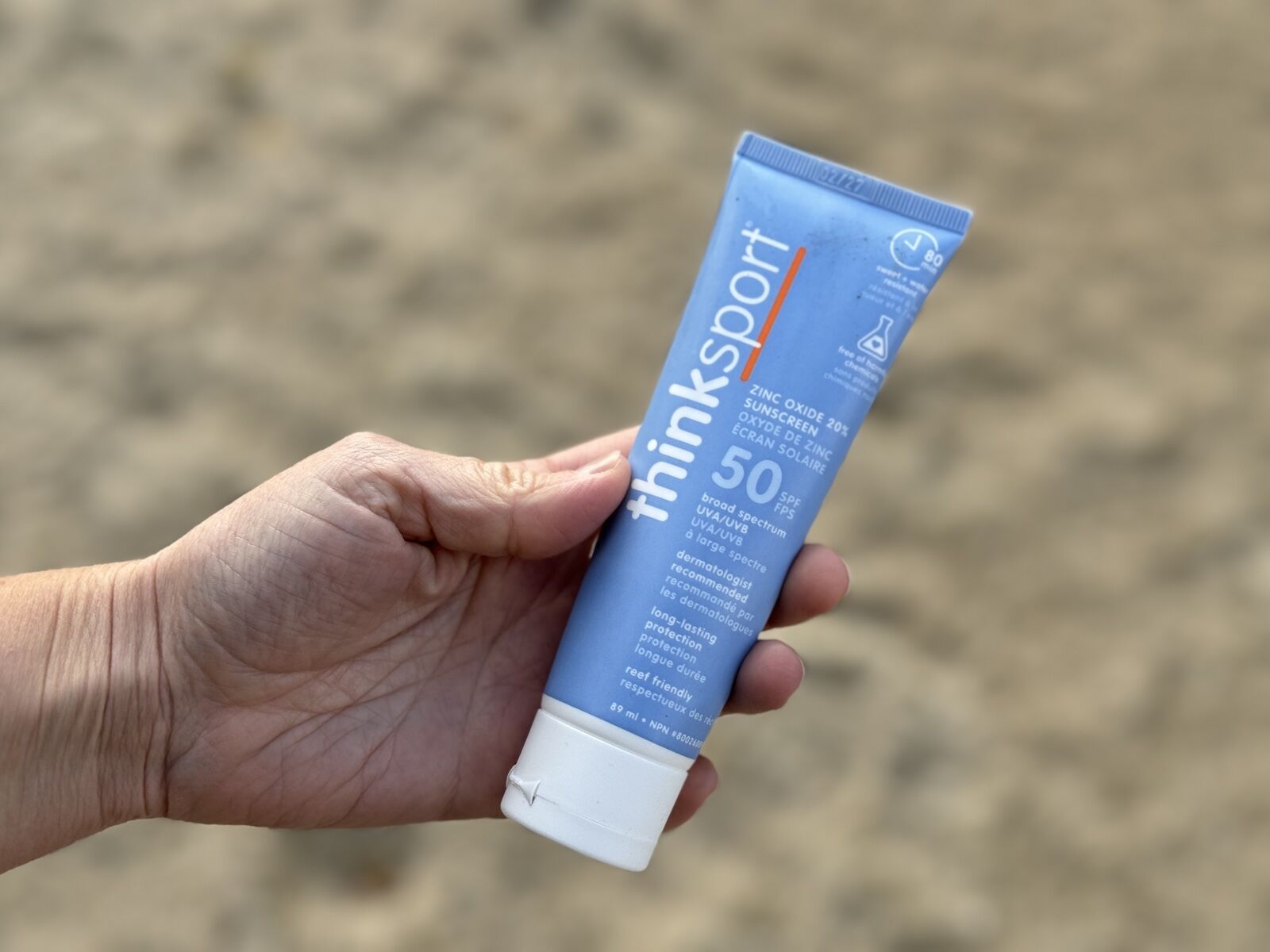
Photo: Jesse Adams
I took a bottle of Think Sport reef-safe SPF 50 sunscreen on my trip, and it was far from enough for my skin. Despite repeated and thorough applications, I got burnt a few times. Find the sunscreen with the highest SPF you can get your hands on (SPF 100 does exist) and apply generously and regularly. Make sure to select an ocean-friendly sunscreen to keep the marine environment happy and healthy.
Lip balm with SPF

Photo: Jesse Adams
Don’t forget to protect your lips from the sun, too. I forgot my Greencricket SPF 30 lip balm at home and had to deal with very damaged lips that took about a week to recover. While the Greencricket brand advertises a clear lip balm, I found it to have a slight tint, so it might not satisfy everyone. However, both Burt’s Bees and Sun Bum offer clear, SPF 30 lip balms.
UV-filtered or polarized sunglasses

Photo: Jesse Adams
Sunglasses with either UV filters or polarized lenses are indispensable for the health of your eyes. While polarized lenses provide your eyeballs with the same sun protection as 100 percent UV lenses, there’s one major benefit to choosing polarized sunglasses: Everything looks a lot clearer and crisper. The polarized lenses get rid of the glare from water, sand, and other surfaces, helping to prevent eye strain. Polarized sunglasses are especially important if you’re trying to spot marine creatures from a boat.
My pair of plastic-framed, tortoise shell Suncloud Metric sunglasses worked beautifully in the Galápagos Islands, and didn’t cost an arm and a leg. I used an eyewear strap from Chums to keep them from falling in the water while kayaking or during Zodiac rides.
UPF clothing
Clothing, especially UPF clothing, is a more convenient option than slathering yourself repeatedly with sunscreen. While it’s tough to wear long pants and a long-sleeve shirt in the hot sun, it’s incredibly effective against sunburns. I packed Marmot’s Windridge UPF 50 Hoody for my trip to the Galápagos Islands and wore it when I didn’t want to apply sunscreen; it worked remarkably well. Other travelers in my group did the same and even regretted not packing more than one.
I wore shorts daily during my seven-day trip and did get sunburns on my thighs despite wearing sunscreen. UPF pants do exist, including zip-off pants that easily convert into shorts, and I would highly recommend to pack a pair or two to keep your skin safe from intense sun exposure.
Wide-brimmed hat
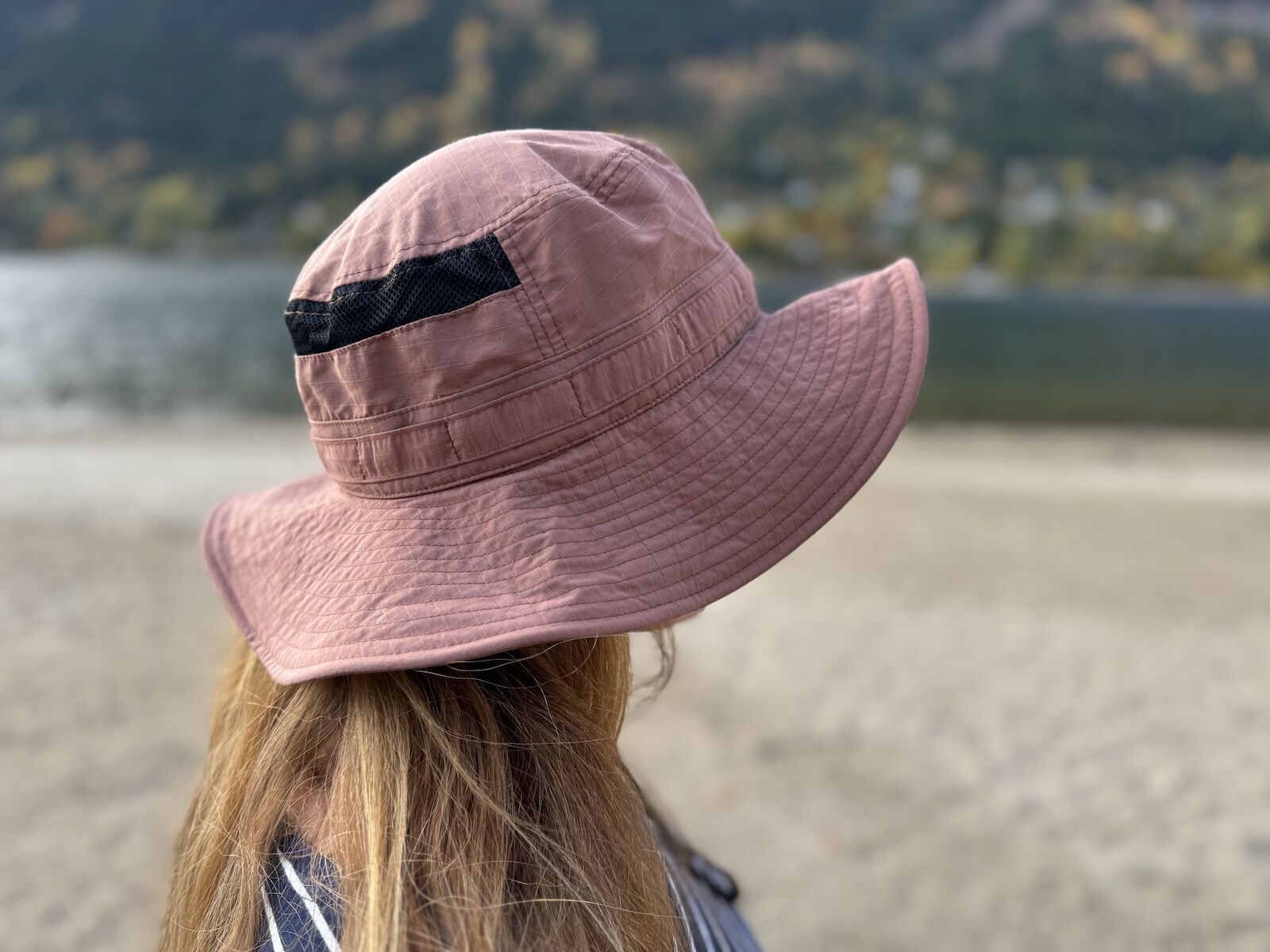
Photo: Jesse Adams
Even if you’re not prone to getting sunburns on your scalp like me, do not travel to the Galápagos Islands without a hat — preferably, a wide-brimmed one that also protects your neck and parts of your face. I traveled with the very light and quick-dry Pistil’s Trent Sun Hat, with UPF 50 protection and an adjustable chin cord to keep it secure.
Rash guard or skin suit
A long-sleeve rash guard (or a full-body skin suit) will not only protect you from the sun around the water, but it’ll also add some warmth in cold water. If you plan to wear it while snorkelling or swimming, make sure it’s a tight fit or it’ll impede your movements. I didn’t have one with me on this trip, but will make sure to pack one next time, as it’s a lot easier to slip one on than to apply sunscreen.
A neck gaiter

Photo: Jesse Adams
I didn’t pack a bandana or gaiter, and ended up purchasing one to protect my scalp while snorkelling. (A swimming cap would have done the trick, too.) It’s also useful for keeping the sun off your face and neck, or using as a headband to keep strands of hair from getting in your eyes. Don’t go without one. I recommend options from Buff, a brand so associated with the product that it’s become a generic term for any kind of neck gaiter.
Camera equipment
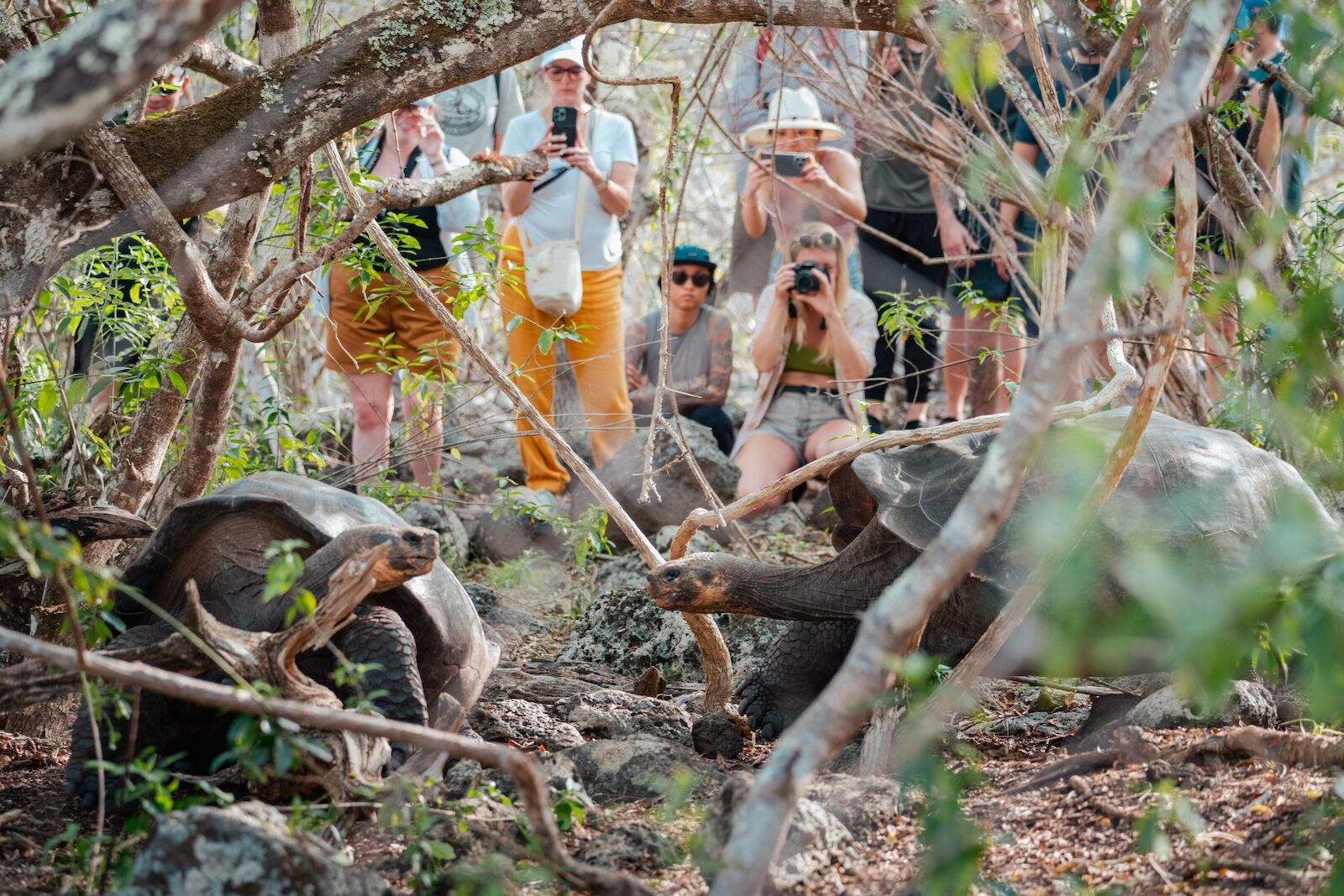
Photo: Robb Leahy via Ecoventura
As amazing as phone cameras have become over the years, you would miss out on some amazing memories if you didn’t pack a good-quality camera with you on a trip to the Galápagos Islands, whether you rent or purchase one. My partner is the photographer in our relationship, so he hauled his heavy and cumbersome Nikon D610 with a 28-300 mm lens all the way to the archipelago. I’m sure it was annoying at times, but looking back at the beautiful shots he took makes it well worth the hassle. Just make sure to carry it in a dry bag at all times — sea water and electronics don’t mix.

Photo: Jesse Adams
Because there’s as much (if not more) to see underwater as on land, travelers to the Galápagos Islands need to be able to capture images while swimming or snorkelling. My partner used a GoPro, which worked out very well, and we also used a waterproof phone case from Seawag, allowing us to shoot great underwater footage of the island’s varied marine wildlife. Pelican makes a very reliable and affordable waterproof phone pouch, too.
Bug-repelling items

Photo: Jesse Adams
While I encountered only a few mosquitos during my seven-day trip to the Galápagos Islands, if you were to travel there during the wet and warm season, you might run into more. I traveled with a natural bug spray that consists of a blend of essential oils, and it was entirely sufficient. Note that wearing light-colored clothing, as opposed to dark colors, will help deter insects from pestering you.
Miscellaneous items
Binoculars

Photo: Jesse Adams
Binoculars are an essential item to pack if you want to watch the amazing wildlife of the Galápagos Islands in action, including blue-footed boobies, whales, rays, dolphins, penguins resting on rocks, baby pelicans, and much more. I traveled with expedition cruise line Ecoventura, which provided us all with binoculars, but I usually travel with my own, as well: a pair of 10 X 42 waterproof and fogproof Solognac. Nocs also makes a solid pair of affordable travel binocular that Matador Network editor Suzie Dundas swears by.
Windbreaker
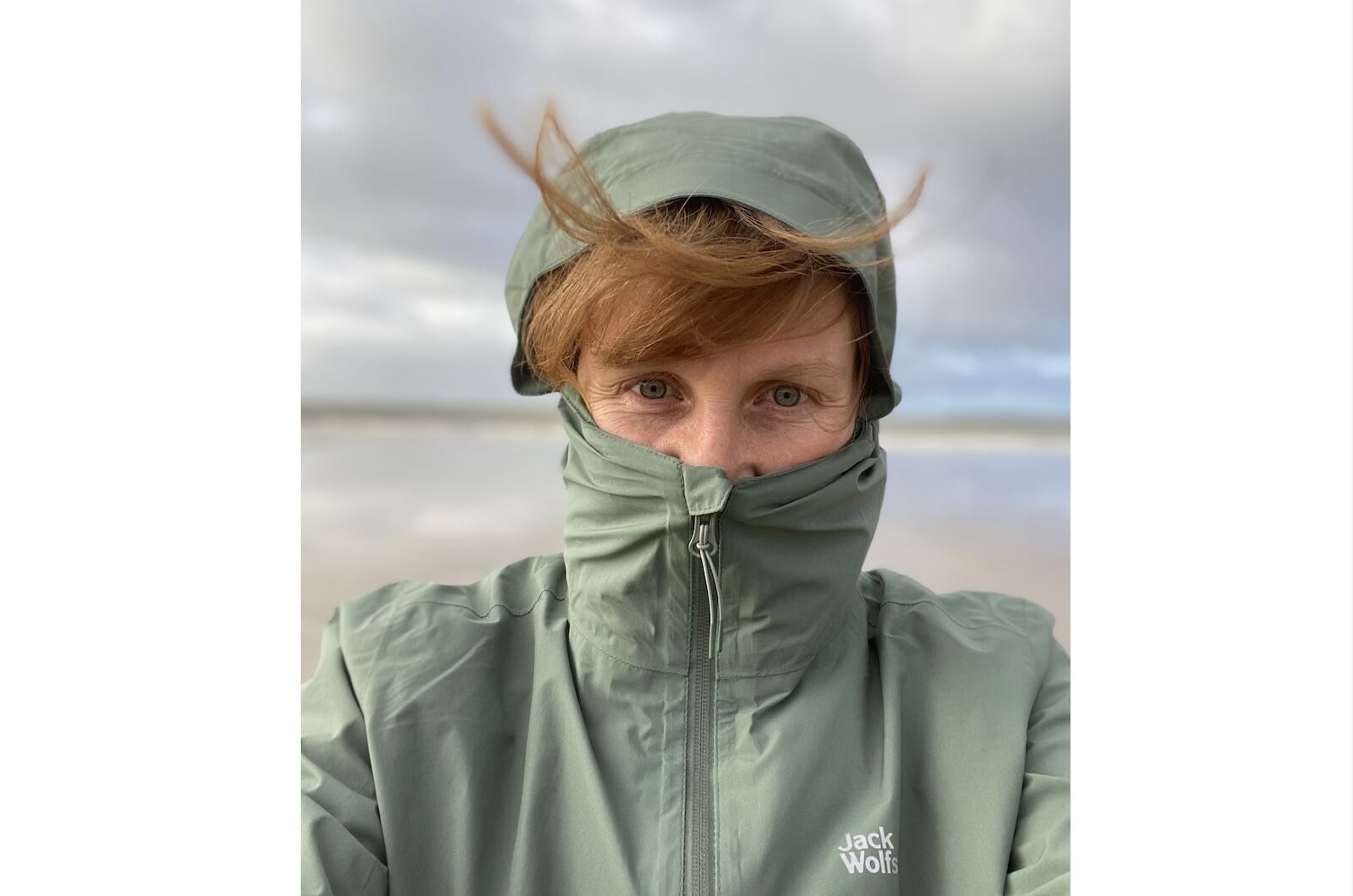
Photo: Morgane Croissant
While I traveled to the Galápagos Islands during the dry and cold season, I packed my windbreaker and used it on a couple of occasions. Don’t travel with something heavy and bulky that will take a lot of room in your luggage — there’s no need for anything fancy. Instead, use a packable rain jacket like the Pack & Go Shell from Jack Wolfskin. You can thrown it in your backpack to have handy at all times, since it takes up next to no room.
Hoodie/fleece

Photo: Natasha Hall
Even if the weather is mostly hot in the Galápagos Islands, you might want to pack a light hoodie or fleece for evenings or chilly mornings. Something like the merino-wool Ibex Shak Hoodie or the Teca Fleece by Cotopaxi is sufficient. I used my Shak hoodie daily despite the wonderful weather.
Mask and snorkel
While Ecoventura provided me with a mask, a snorkel, and a three-millimeter wetsuit for the duration of the trip, if you’re traveling to the islands independently, you may want to bring your own mask and snorkel. Don’t bother with the wetsuit unless you’re a super keen snorkeler or diver — you can probably rent one from one of the outfitters on San Cristobal or Santa Cruz if you need it. A full-body skin suit might be sufficient if you stick to warm-water spots.
E-sim
If you want to stay connected during your time in the Galápagos Islands, get yourself an e-sim from GigSky. Unlike other e-sims, GigSky works both on the Ecuadorian mainland and the islands. I paid $14.99 for 15 days and 3 GB of data — a deal if there ever was one.